AM354550, Oilite, Oilite® Plain Bush
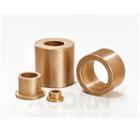
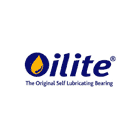
Metric, Bushing
AM404630, Oilite, Oilite® Plain Bush


Metric, Bushing
AM404640, Oilite, Oilite® Plain Bush


Metric, Bushing
AM404650, Oilite, Oilite® Plain Bush


Metric, Bushing
AM405025, Oilite, Oilite® Plain Bush


Metric, Bushing
AM607560, Oilite, Oilite® Plain Bush


Metric, Bushing
MB0505DU, Neutral, Plain Bush
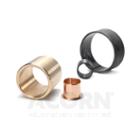
Bushing
MB1020DU, Neutral, Plain Bush

Bushing
MB1520DU, Neutral, Plain Bush

Bushing
MB3220DU, Neutral, Plain Bush

Bushing
MB4530DU, Neutral, Plain Bush

Bushing
MB5020DU, Neutral, Plain Bush

Bushing
MB5050DU, Neutral, Plain Bush

Bushing
MB7580DU, Neutral, Plain Bush

Bushing
PAF10170 P10, Permaglide, Flange liner
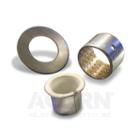
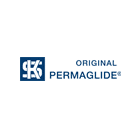
Metric, Bushing
PAF12090 P10, Permaglide, Flange liner


Metric, Bushing
PAF18120 P10, Permaglide, Flange liner


Metric, Bushing
PAF20215 P10, Permaglide, Flange liner


Metric, Bushing
PAP 0505 P10, Permaglide, Cylindrical bush for maintenance-free, dry-running applications


Metric, Bushing
PAP 0610 P10, Permaglide, Cylindrical bush for maintenance-free, dry-running applications


Metric, Bushing
What are bushings are where are they used?
Also known as sleeve bearings, use sliding motion to reduce friction between moving surfaces.
Bushings can be made from a wide range of materials to suit all application requirements, such as cast iron, pressed steel and thermoplastic.
Maintenance-free and self-lubricating options are available, helping businesses to reduce their downtime and increase their productivity, as well as extending the life of the bushing.
Bushings FAQs
What types of applications use bushings?
This type of bearing is most suitable for applications with heavy load requirements, as well as oscillating movements. Bushings are found in a wide range of industries, in all types of industrial applications.
What is a bushing?
A bushing is a type of mechanical component (also called a plain bearing or sleeve) designed to reduce friction, absorb shock, and provide support between two moving parts—typically between a shaft and housing.
What is the purpose of a bushing?
-
Reduce friction between moving parts
-
Dampen vibration and noise
-
Provide alignment and support
-
Protect equipment from wear and tear
